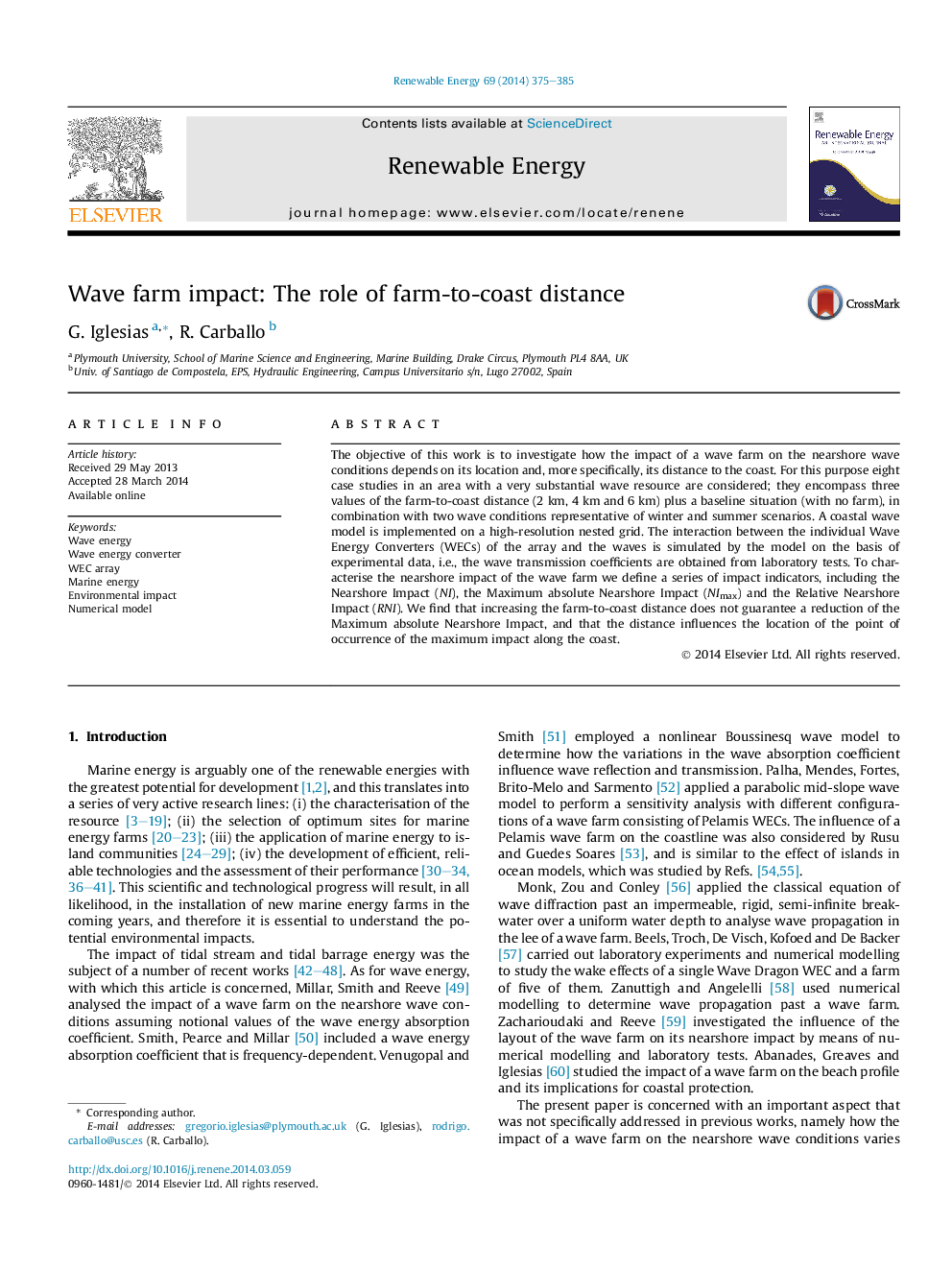| Article ID | Journal | Published Year | Pages | File Type |
|---|---|---|---|---|
| 6768365 | Renewable Energy | 2014 | 11 Pages |
Abstract
The objective of this work is to investigate how the impact of a wave farm on the nearshore wave conditions depends on its location and, more specifically, its distance to the coast. For this purpose eight case studies in an area with a very substantial wave resource are considered; they encompass three values of the farm-to-coast distance (2Â km, 4Â km and 6Â km) plus a baseline situation (with no farm), in combination with two wave conditions representative of winter and summer scenarios. A coastal wave model is implemented on a high-resolution nested grid. The interaction between the individual Wave Energy Converters (WECs) of the array and the waves is simulated by the model on the basis of experimental data, i.e., the wave transmission coefficients are obtained from laboratory tests. To characterise the nearshore impact of the wave farm we define a series of impact indicators, including the Nearshore Impact (NI), the Maximum absolute Nearshore Impact (NImax) and the Relative Nearshore Impact (RNI). We find that increasing the farm-to-coast distance does not guarantee a reduction of the Maximum absolute Nearshore Impact, and that the distance influences the location of the point of occurrence of the maximum impact along the coast.
Related Topics
Physical Sciences and Engineering
Energy
Renewable Energy, Sustainability and the Environment
Authors
G. Iglesias, R. Carballo,
